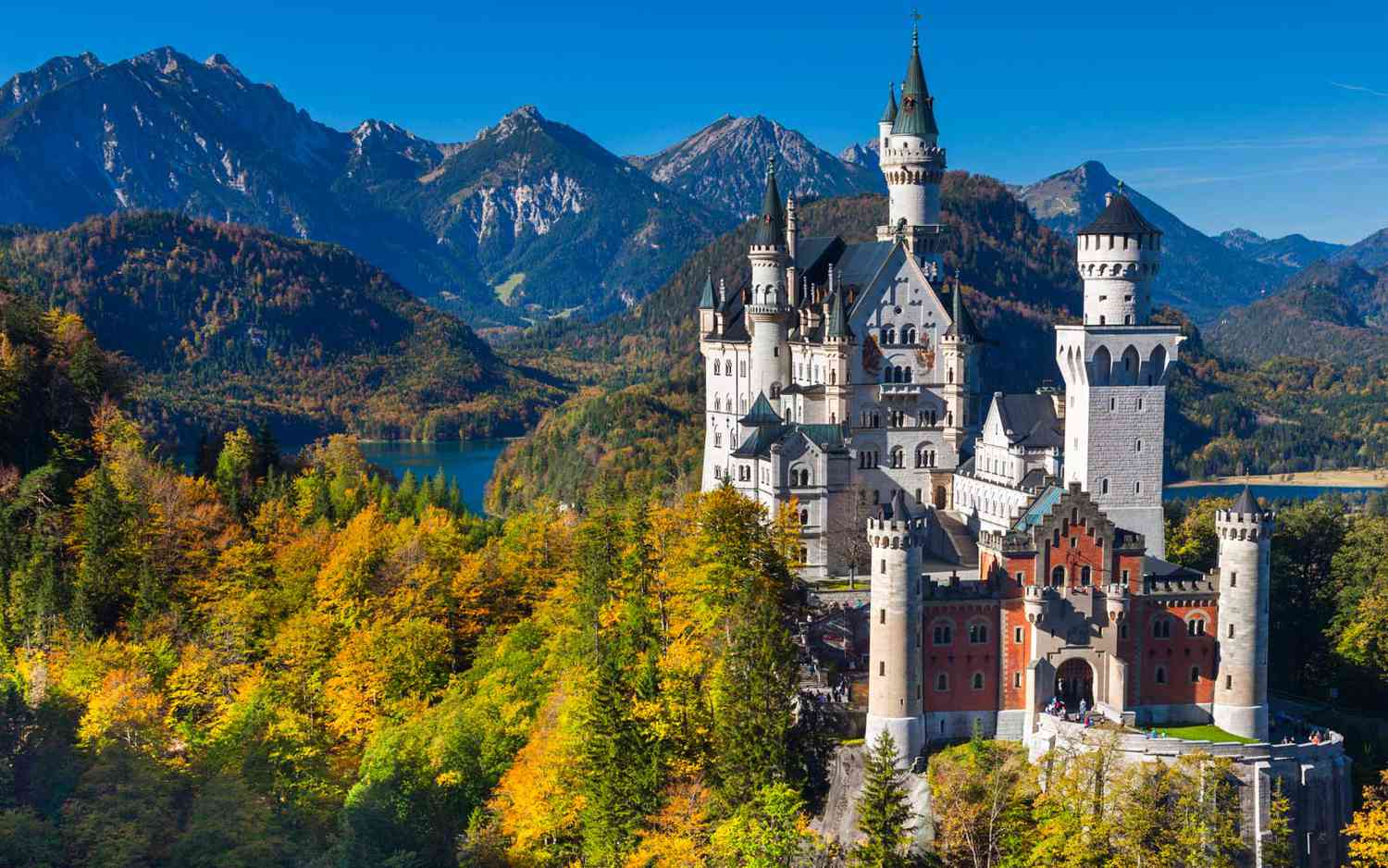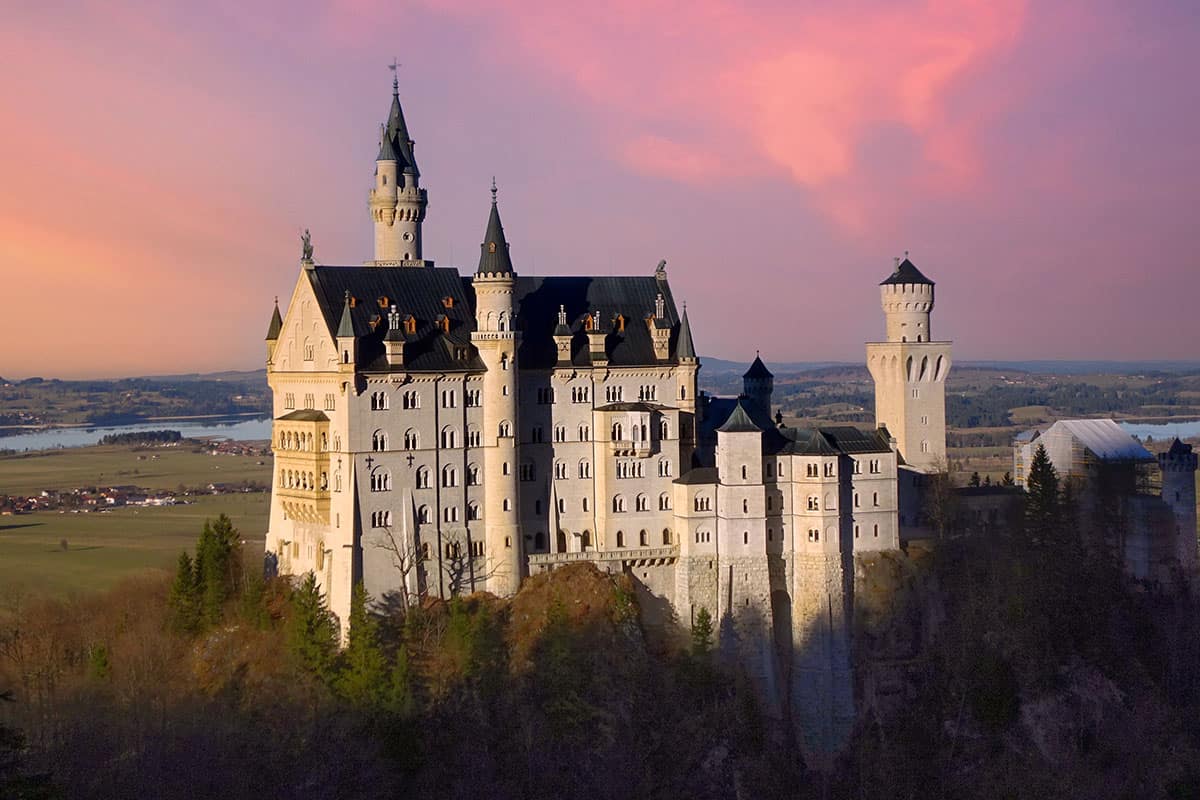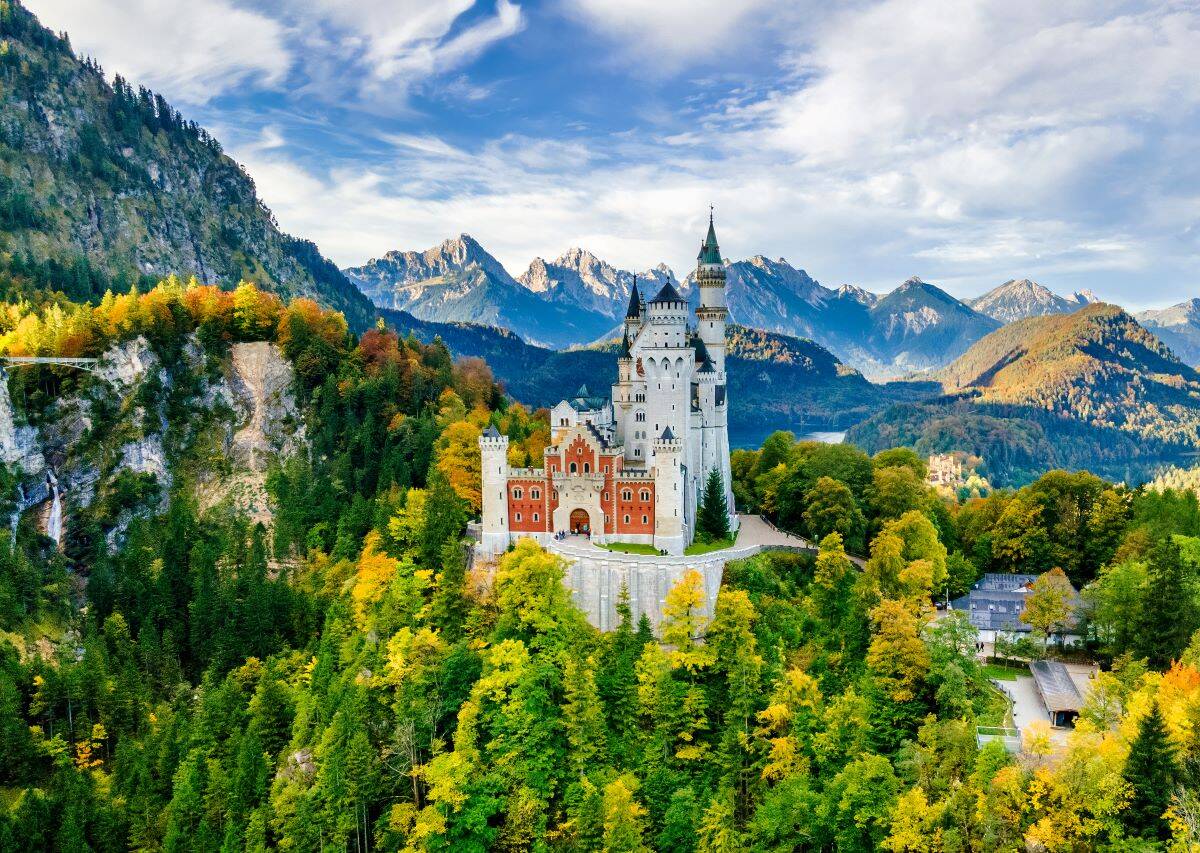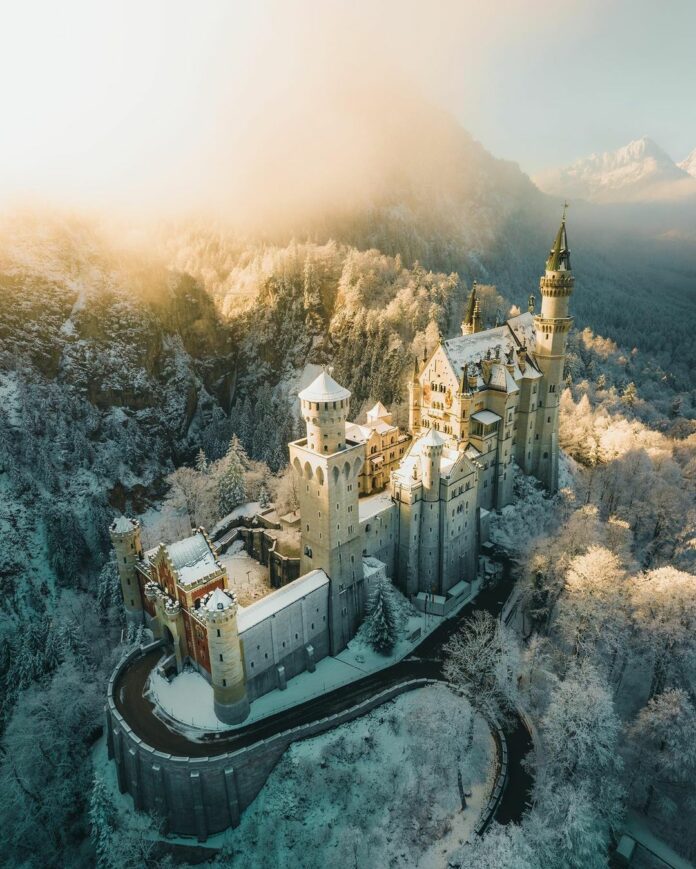Perched on a rugged hill amidst the breathtaking scenery of the Bavarian Alps, Neuschwanstein Castle stands as a symbol of romanticism and royal aspiration. This 19th-century palace, commissioned by King Ludwig II of Bavaria, is one of the most iconic structures in the world, drawing millions of visitors each year. Though intended as a private retreat for the king, it has become a must-see destination for those enchanted by its storybook beauty and historical significance.
The Vision Behind Neuschwanstein

Neuschwanstein Castle, located in the Swabia region of Bavaria, near the Austrian border, was more than just an architectural endeavor; it was an escape for King Ludwig II. Despite having the Munich Residenz, one of the world’s largest palace complexes, Ludwig sought solace from the pressures of his monarchy in a more secluded and picturesque setting. The king’s deep admiration for composer Richard Wagner played a significant role in the castle’s conception, as it was intended to be a tribute to Wagner’s operatic works.
A Unique Location in the Bavarian Alps

The castle is situated above the village of Hohenschwangau, itself the site of another historic palace—Hohenschwangau Castle. This village lies at the foothills of the Alps, where the landscape transitions from mountainous terrain to rolling hills. Ludwig’s father, King Maximilian II, had purchased the ruins of Schwanstein Castle and replaced them with the neo-Gothic Hohenschwangau Castle, where Ludwig spent much of his childhood. This idyllic setting, with its lakes and mountain views, was the perfect canvas for Ludwig’s romantic vision.
The Inspiration and Design of Neuschwanstein

Neuschwanstein Castle embodies the 19th-century trend of castle romanticism, a style that sought to recreate the medieval past with a picturesque flair. Ludwig II was inspired by his visits to the reconstructed Wartburg Castle in Germany and the Château de Pierrefonds in France, both of which influenced his desire to build a castle that mirrored the romanticized Middle Ages.
The design of Neuschwanstein was the work of stage designer Christian Jank, with architectural realization by Eduard Riedel. The castle’s eclectic style merges Romanesque, Gothic, and Byzantine elements, all brought together with the latest 19th-century technology. The castle’s design also reflects Ludwig’s fascination with Wagner’s operas, particularly “Tannhäuser” and “Lohengrin,” with many rooms inspired by scenes from these works.
Construction and Challenges

Construction of Neuschwanstein began in 1869, but it was never completed. The project was ambitious, requiring the demolition of medieval ruins and the use of innovative building techniques for the time. The castle’s construction employed hundreds of workers, and at its peak, the site was the largest employer in the region. Despite the extensive work and resources poured into the project, only parts of the palace were finished during Ludwig’s lifetime.
Ludwig’s vision expanded over time, leading to escalating costs and delays. Though initially intended to be completed by 1872, the castle remained unfinished when Ludwig died in 1886. The king had only spent 172 days in his beloved retreat before his mysterious death.
Legacy and Modern Day

Following King Ludwig II’s death, Neuschwanstein Castle was opened to the public, and it quickly became a popular tourist attraction. Today, more than 1.3 million people visit annually, with up to 6,000 visitors per day during peak seasons. The castle’s fairytale appearance and dramatic setting have made it one of the most photographed buildings in the world, and it continues to inspire artists, filmmakers, and dreamers alike.
Conclusion
Neuschwanstein Castle is more than just a beautiful building; it is a monument to the dreams and passions of a king who sought to escape the burdens of his crown in a world of romantic fantasy. Although Ludwig II did not live to see his vision fully realized, the castle stands as a testament to his legacy and the enduring power of imagination. Visitors from around the globe continue to be captivated by the enchanting allure of Neuschwanstein, making it a timeless symbol of Bavarian heritage.
